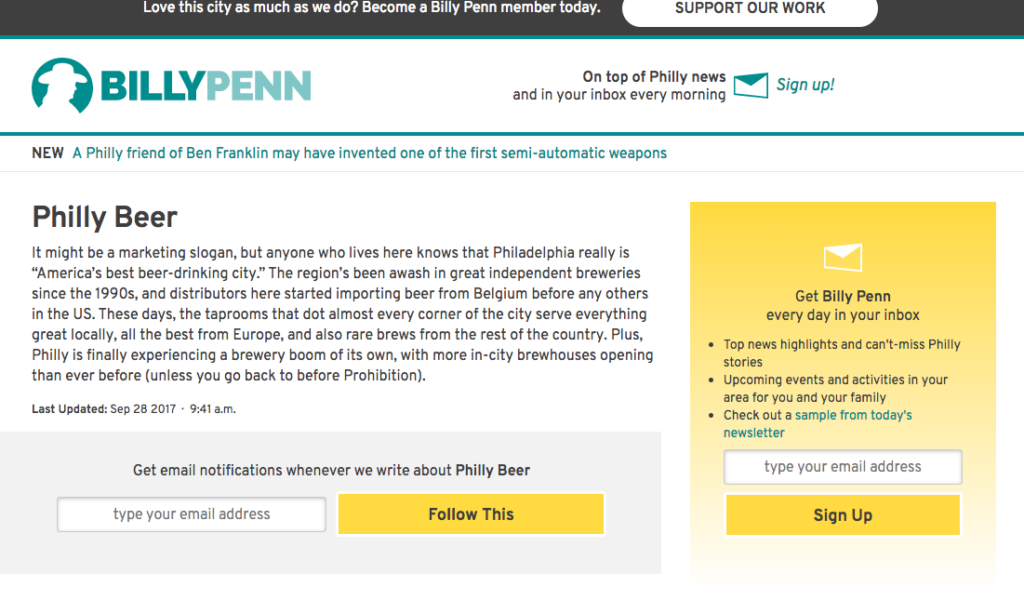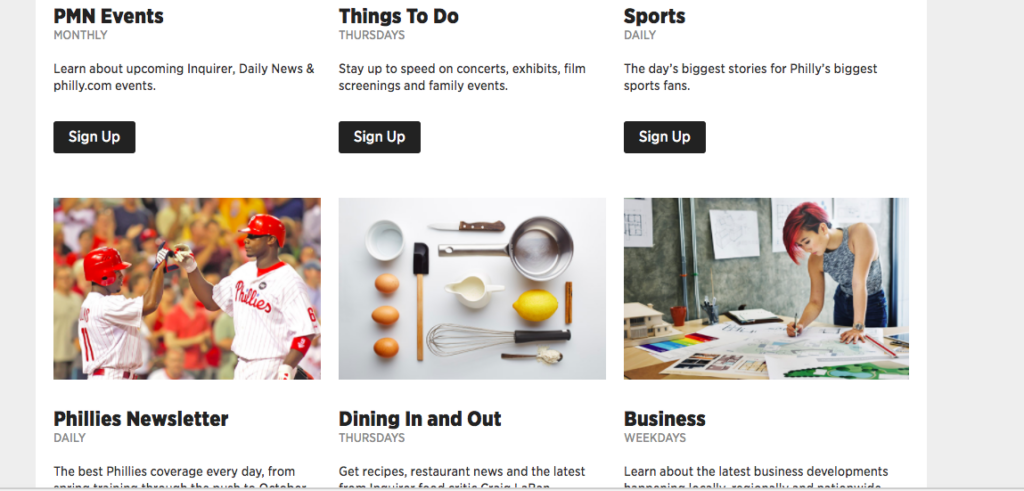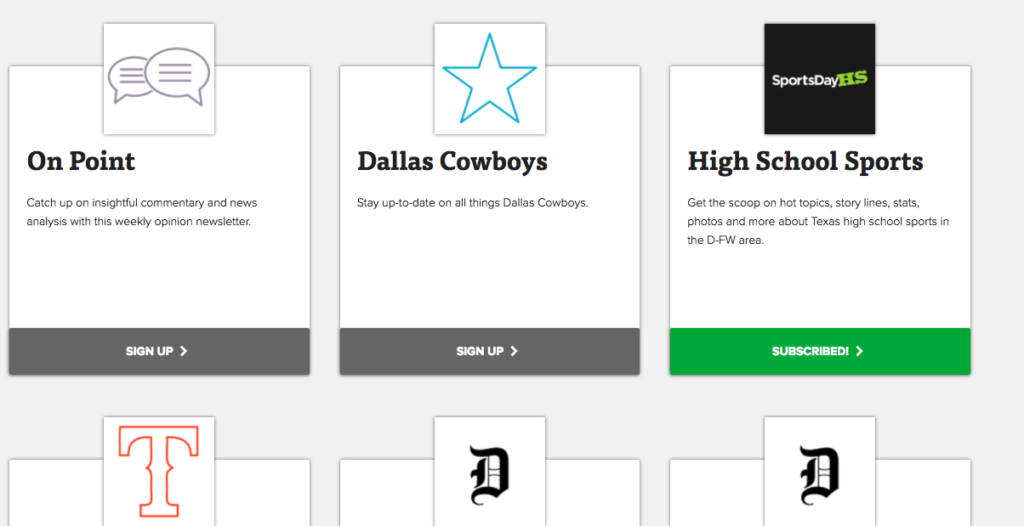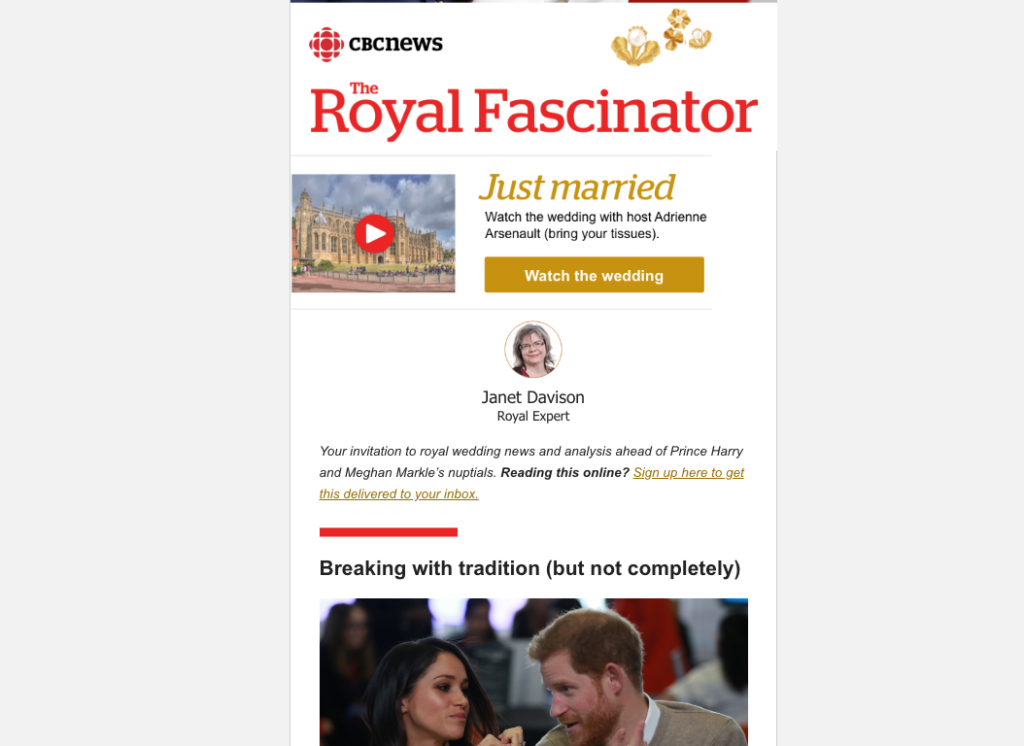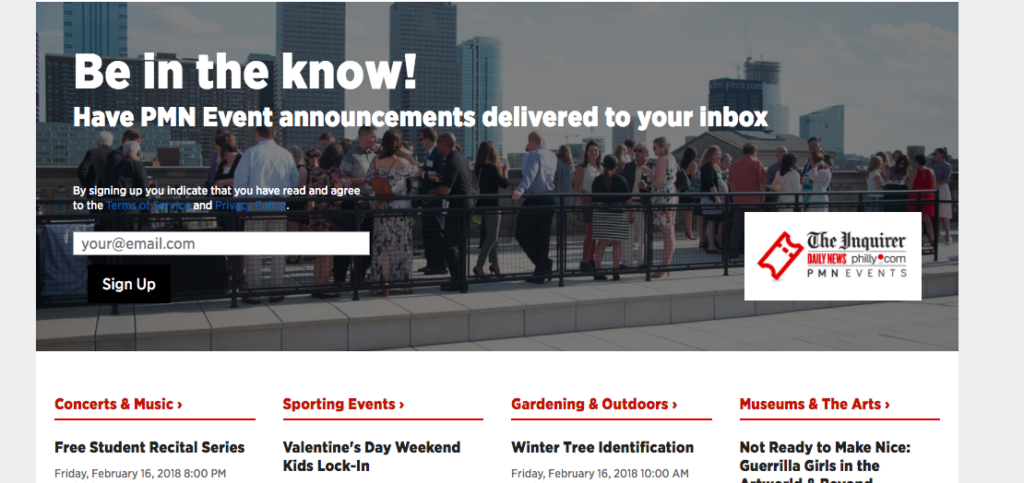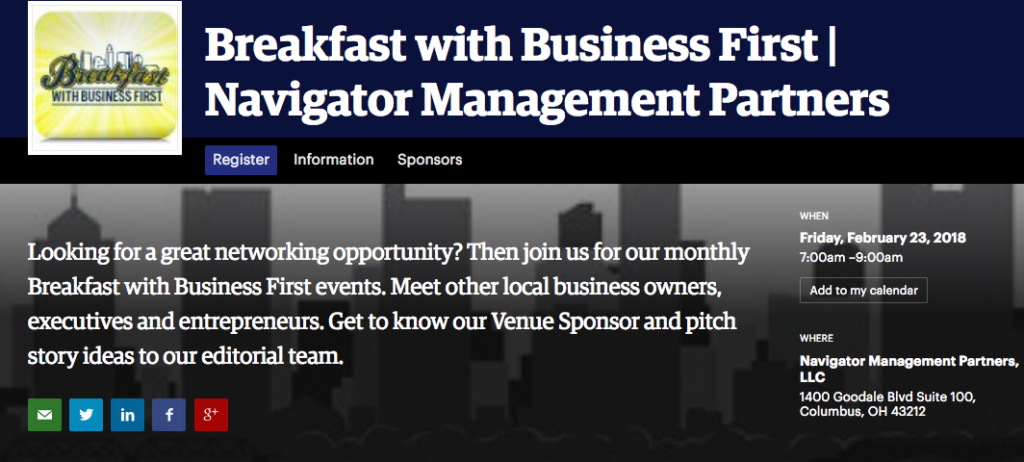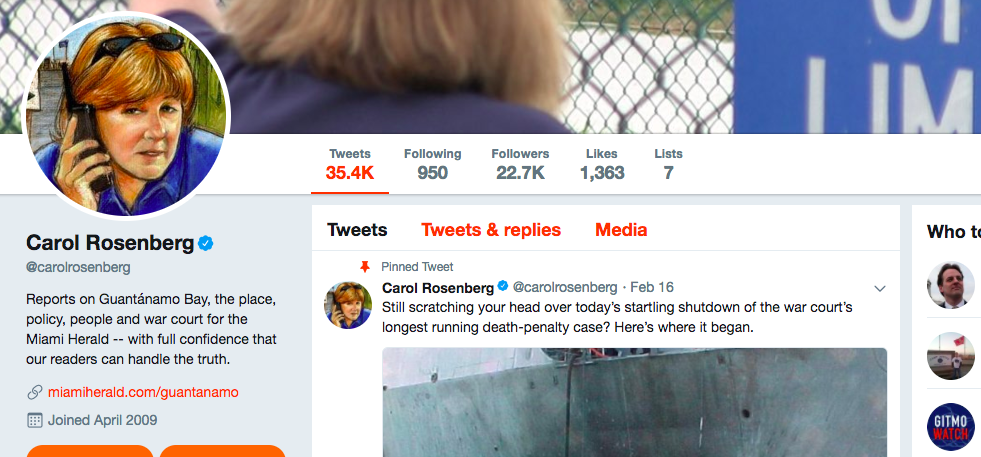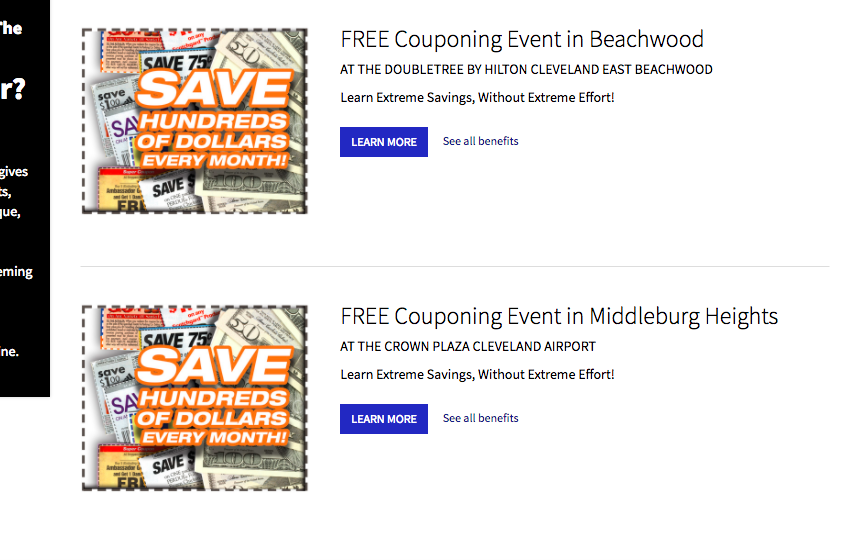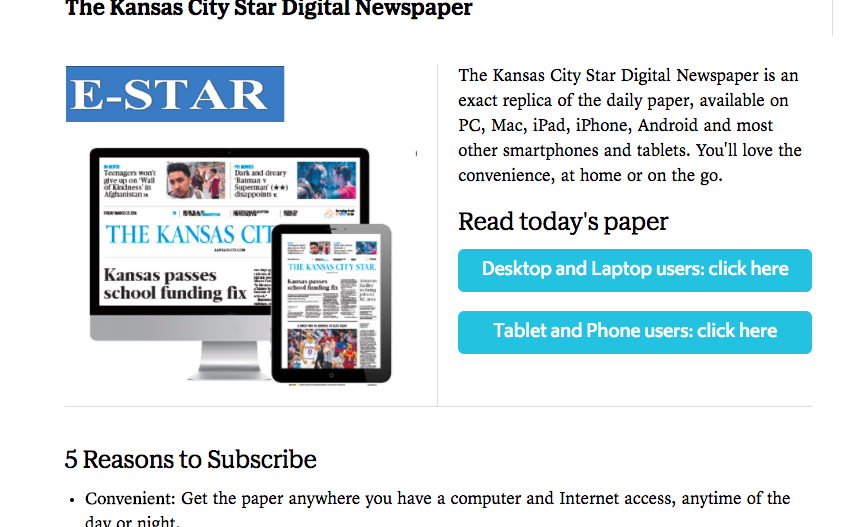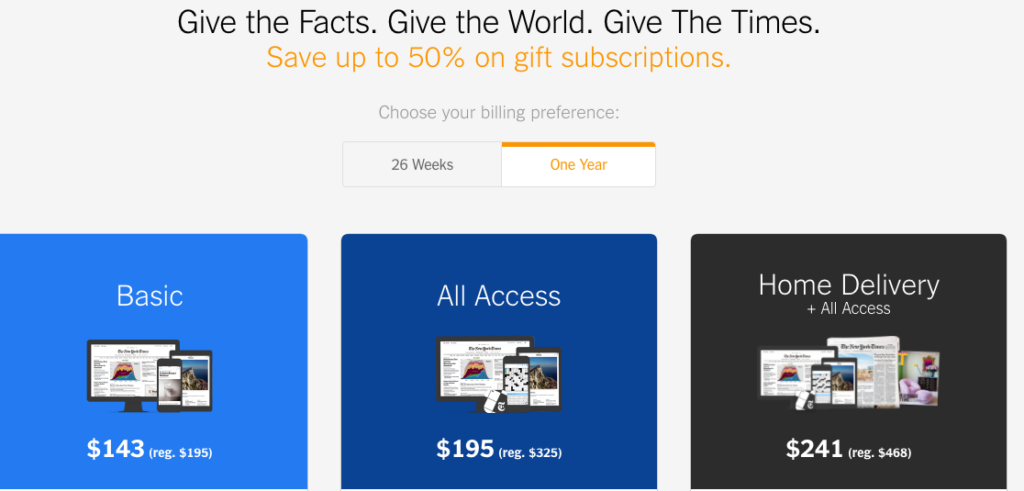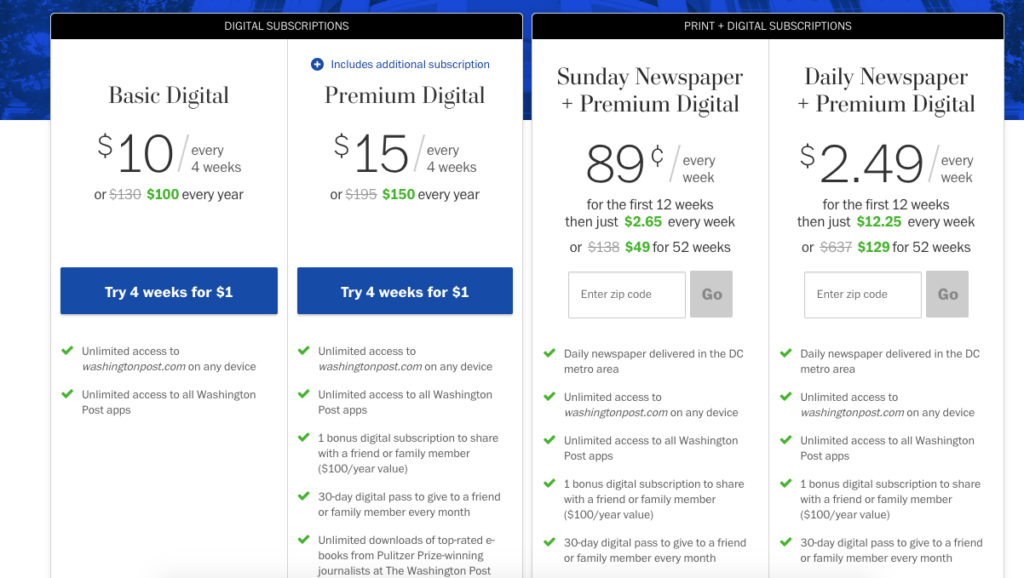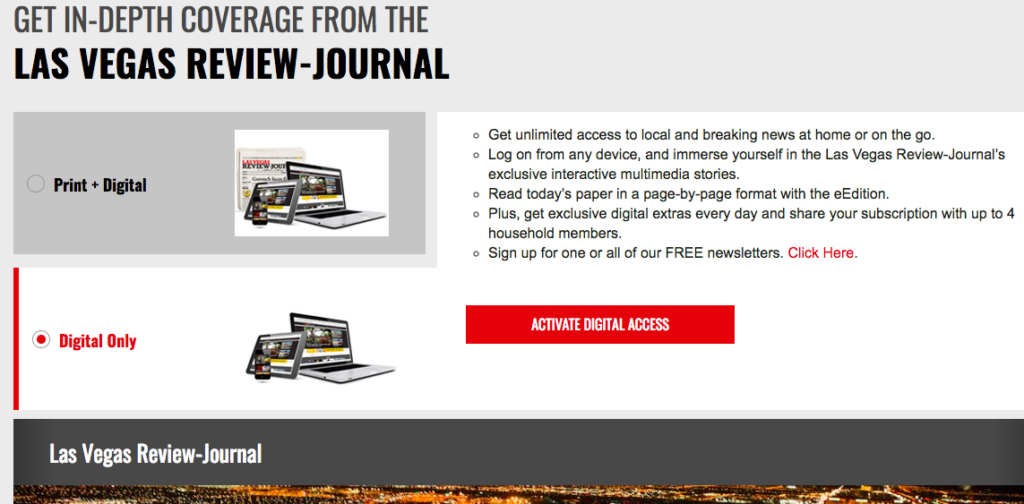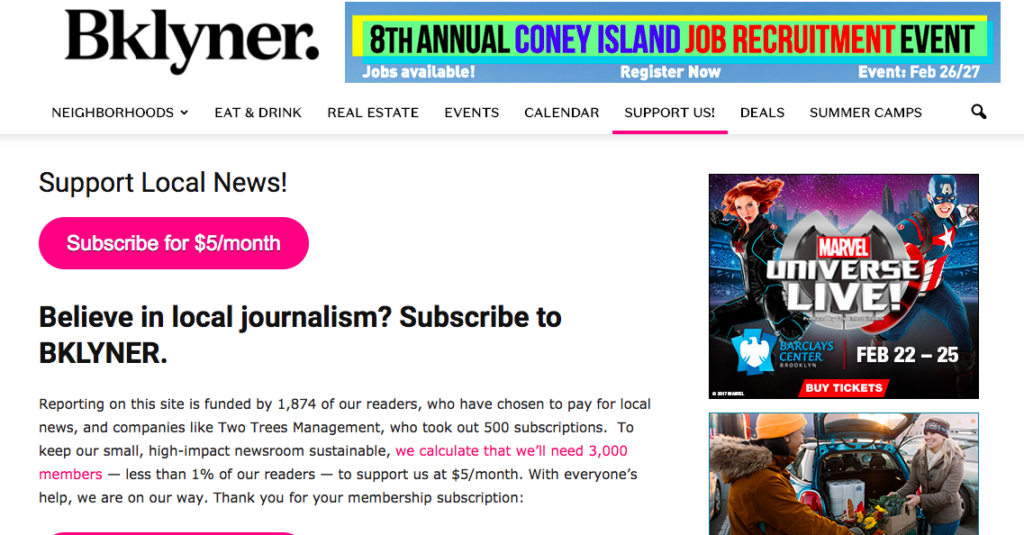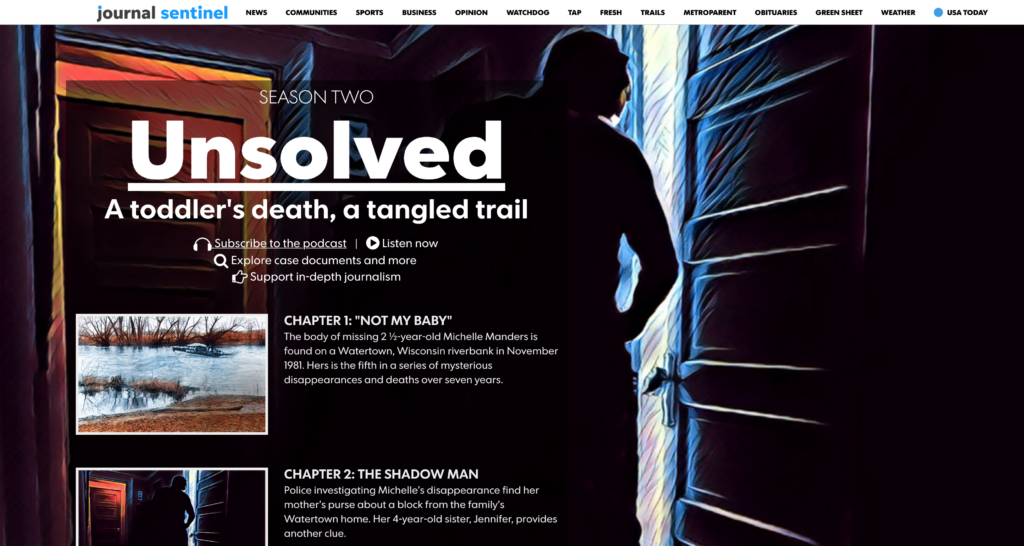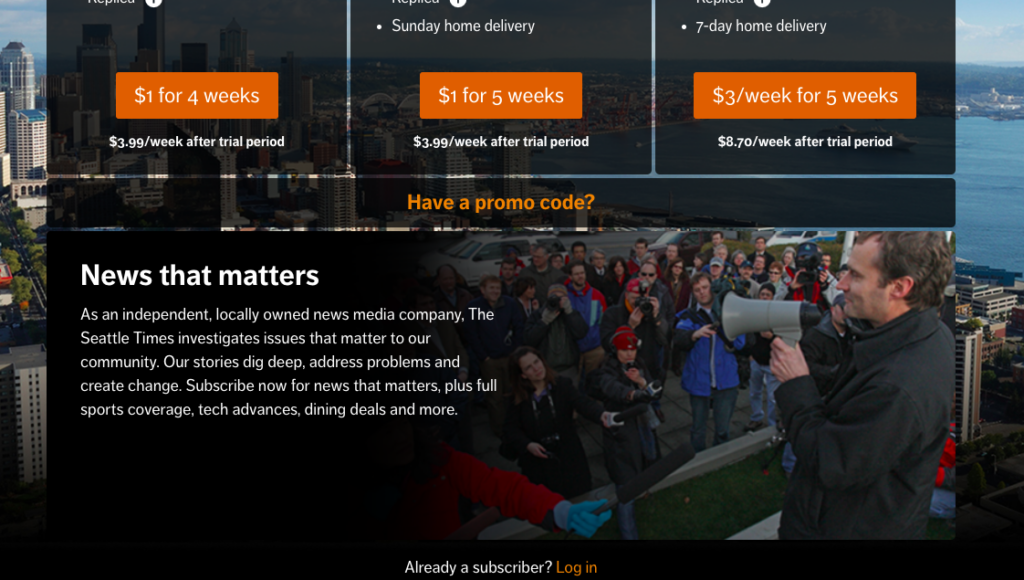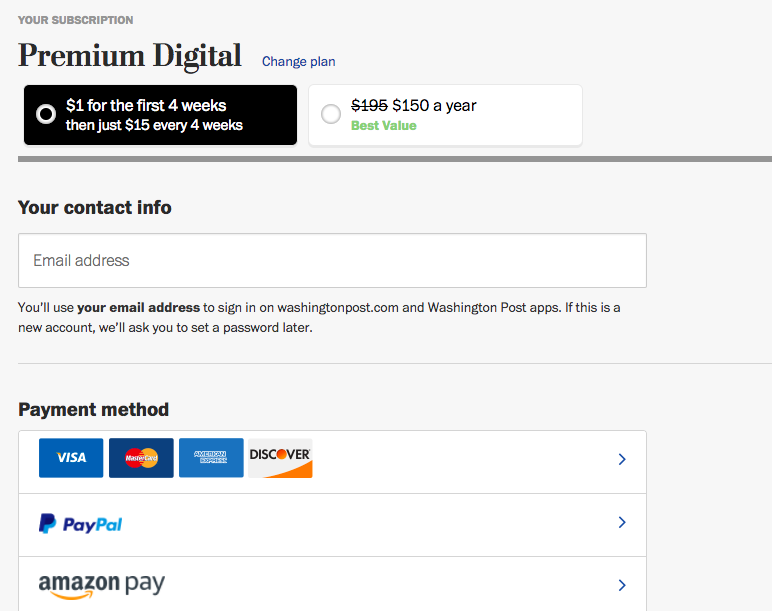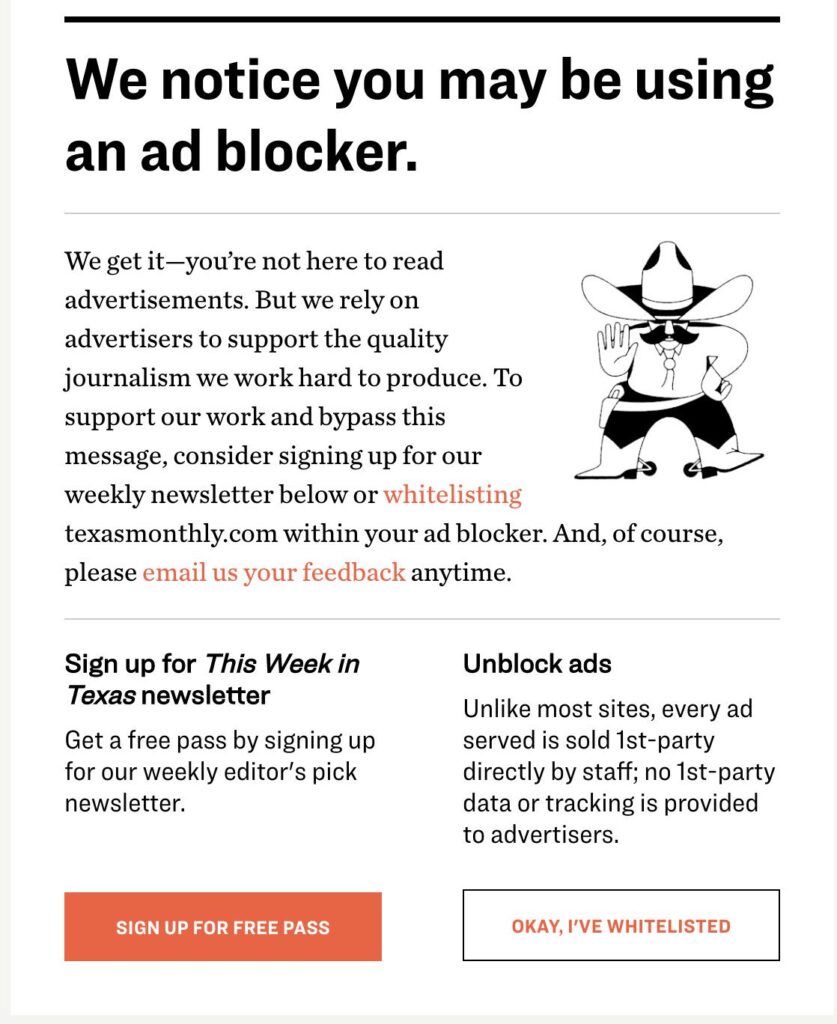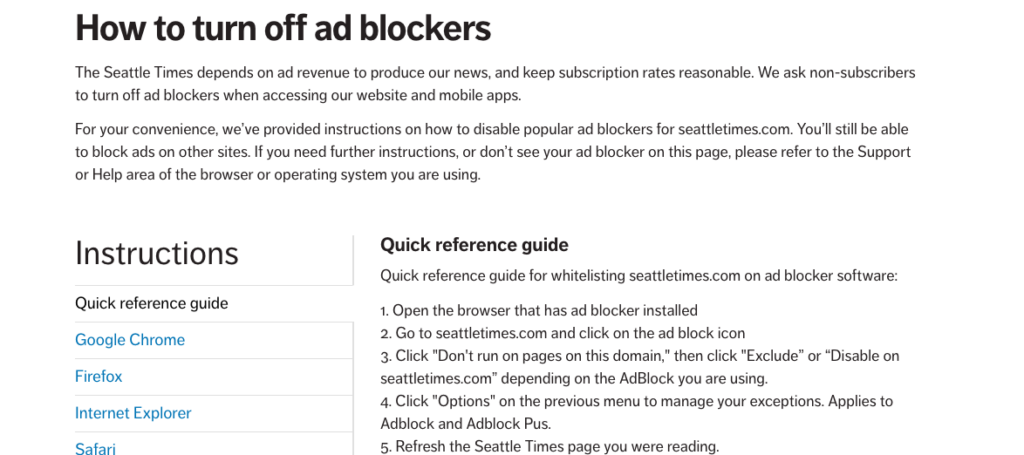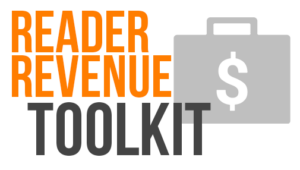 The path from a casual reader to a paying subscriber isn’t a short one, but by understanding how audiences get from one place to another, publishers can begin to devise strategies to get more readers to complete that journey.
The path from a casual reader to a paying subscriber isn’t a short one, but by understanding how audiences get from one place to another, publishers can begin to devise strategies to get more readers to complete that journey.
A recent study published by the American Press Institute as part of The Media Insight Project surveyed audiences and found nine distinct reader types. The study surveyed more than 4,000 recent subscribers at 90 local papers within four circulation categories.
It took more than 70 percent of readers over a month to reach the point where they chose to subscribe, and nearly 50 percent took at least a year. Although making the decision to subscribe took time, the process varied according to readers’ life stage and interest.
Here’s an overview of those paths to subscription, or reader types, and examples of how publishers have targeted them. These are just ideas, and there may be many strategies beyond those outlined here to target these reader types, but understanding the many reasons people subscribe is the first step toward guiding audiences there.
Topic Hunters
A reader is worried about what might happen in an upcoming election. They’re reading everything they can about the ballot measures and candidates. They follow local reporters covering the races, and become supporters of that reporting. After reading several stories and repeatedly hitting a metered paywall, they decide to subscribe.
These Topic Hunters tend to care very deeply about one or two topics. They come across a publication’s coverage of that topic and over time, they decide that coverage is worth paying a subscription fee for.
The majority of Topic Hunters care deeply about local government (53 percent) and national government issues (35 percent). Sports and business coverage also are favorites of Topic Hunters.
Approaches for Topic Hunters
Track users by topic and then tailor messaging
Analytics makes finding Topic Hunters easier. Many of these readers find stories initially by search or by following beat reporters.
The Dallas Morning News took advantage of search traffic by offering specific content and then tailoring subscription call-to-actions. High school sports was a popular topic in Dallas. On a user’s first visit, the site offered to keep readers up to date with high school sports news. More than 10,000 email addresses were gathered and later funneled into a newsletter called “The Fifth Down.”
Combining a four-day meter in conjunction with the newsletter proved successful. The newsletter has a 27 percent click-through rate, and high school coverage lead to more subscriptions in a three-month period than the rest of the site combined.
Create topic-based newsletters and podcasts
Engaging users and sparking their curiosity around a topic can also pay off.
Consider creating newsletters or podcasts based on popular topics. It satisfies the user’s need for more and continual information about a topic, and gives publishers a more targeted way to engage them and push them along the path to subscription.
Philadelphia news startup Billy Penn lets users sign up for notifications any time a story on a particular topic, like local beer, is published. The subsequent list also gives the newsroom a way to target interested readers next time there’s an event they may be interested in attending.
The Philadelphia Media Network and the Dallas Morning News focused their topical newsletters around subjects their readers care about — local sports teams and restaurants. Public media outlet WBUR in Boston did a different spin on a topical newsletter, allowing audiences to subscribe to an automated series that guides them through a 21-day exercise challenge, dubbed “The Magic Pill.”
Topical newsletters don’t have to last forever. The Canadian Broadcasting Company Corporation (CBC) launched a pop-up newsletter around the royal wedding in 2018 and succeeded in getting extremely high open rates of 65 percent on average. Hundreds of people also interacted with the newsletter, prompting a whole issue that focused on answering reader questions.
Use social media to build individual brands
Reporter and editors who have deep knowledge of a beat can be their own ultra-personalized opening to Topic Hunters. People like Carlos Frías of the Miami Herald or Steve O’ Hear of TechCrunch have deep expertise in their beats, but they also have distinct personalities. Their large followings can lead to boosts in readership for a particular topic.
These writers can also use that following to write a topical newsletter, like O’ Hear’s ITK newsletter which features writing from him at TechCrunch and other recommended links on technology.
Host events catered to Topic Hunters
Take a cue from business journals around the country and host “After Hours” events geared toward different communities throughout the year.
Local newsrooms can gear events toward known gaps in the local events space, or create a new brand through a festival like the Texas Tribune’s eponymous annual bash or a conference like WSJ D.Live, the Wall Street Journal’s digital conference.
Resources
- More on The Royal Fascinator, CBC’s pop-up newsletter, Lenfest Institute
- A thorough resource on local newsletter types, NPR Training
- An interview with the Live Editor for the Wall Street Journal, The Idea
- Why The Texas Tribune is so good at local events, Nieman Lab
- More on the complexities of hosting events, BetterNews
Locally Engaged
Locally Engaged readers are people who care deeply about their community. They’re not there for discounts; they chose to subscribe because they want to stay informed about local government and what is happening in their hometown.
Most of the Locally Engaged can be found at small-to-medium sized publications that cover local government, schools and civic life.
Approaches for the Locally Engaged
Identify civic-minded topics and provide ways to delve deep
Just as the Philadelphia Media Network provided ways for people to stay up to date on local restaurants, the same can be done with civic topics. PMN’s multiple newsletter options allow interested Locally Engaged readers to subscribe to events announcements. Newsrooms could also use topical newsletters to tackle complicated local issues or elections.
In Kansas, The Shawnee Mission Post found that focusing on local government stories and highlighting them in its newsletter led to more paywall conversions than writing about new restaurants.
Partner with local civically-minded organizations
If a local non-profit or business has something a newsroom lacks, a partnership could end up well for both parties. Partnering with an organization that is civic-minded also could draw the attention of the Locally Engaged.
One potential idea: NowCastSA partnered with a local library to gain office space, and in exchange, regularly hosts programming there. Other news organizations have partnered with libraries on things like audience engagement and learning more about their community.
At the MinnPost, selling off extra ad inventory also helps local organizations. The news site grants local nonprofits a steep discount on ad inventory that hasn’t sold yet. It generates about $6,000 in annual revenue, but also reaps goodwill from the nonprofits and readers who notice.
Columbus, Ohio’s Business First finds venues in local businesses. The business journal hosts a monthly networking session between reporters and the community, called Breakfast With Business First, and the venue is donated by a local sponsor. The sponsor gets access to other businesses and potential clients or customers, and Business First saves on venue costs.
Offer bulk subscription packages for schools and universities
Establishing a bulk subscription rate for local schools or groups can also be a way to reach, and possibly cultivate, more Locally Engaged subscribers. Working with schools to make sure your publication is easily accessible gives students a wealth of knowledge.
Resources
- How NowCastSA and other newsrooms are partnering with libraries, Poynter
- Curious City’s lessons from partnering with local libraries
- Lenfest Institute on MinnPost’s ad inventory deal for nonprofits
- The Shawnee Mission Post’s growth in digital subscribers, Nieman Lab
Social Media and Mobile Discoverers
Social Media and Mobile Discoverers are often young, progressive news consumers. Members of this group are typically active on social media, and often interact with journalists on those platforms. They also respond well to mobile alerts.
Social Media and Mobile Discoverers are one of the more digitally-focused groups of readers and their path to subscription often starts with social media interactions and continues until they hit a paywall or hear about a discount.
For many Social Media and Mobile Discoverers, unlimited access to a digital publication is the most important thing. They like finding and sharing articles with their friends and family.
Approaches for Social Media and Mobile Discoverers
Form deep relationships through interactions on social media
A recent study that evaluated the quality of news organizations’ use of social media, audience engagement and trustworthiness concluded that the three are intertwined. As audiences are most likely to engage with news organizations on social media, it’s worth encouraging reporters in your newsroom to interact with audiences on these platforms, and start forming deep relationships that can lead audiences on a path toward subscription.
At the Miami Herald, for example, Carol Rosenberg, a reporter who focuses on Guantánamo Bay, regularly live tweets happenings on her beat, shares useful information and responds to reader comments.
Use social media to boost transparency and tell audience-centered stories
Transparency and engagement go a long way with the Social Media and Mobile Discoverers. This group values interactions and access to the newsroom through social media channels.
The Denver Post was called out for publishing a photo of the wrong baseball field in the paper. On social media, the paper responded to complaints and was honest about the error.
For the magazine Bitch Media, focusing on engagement led to an increase in subscriptions, as people who interacted with the brand via the engagement tool Hearken were two to five times more likely to subscribe.
Reporters and producers should also be encouraged to share stories with their social networks. One good way to do this is to use Twitter to thread together a story; a technique which can also be used to give background and explain the reporting process.
Build communities of like-minded people
The Dallas Morning News created an invite-only Facebook group focusing on subscribers. The group gives the newsroom a place to float ideas, respond to questions and engage with an important segment of their audience.
Facebook groups and Slack communities present an opportunity to dig deeper on a topic, as well as get to know audience segments. Nieman Lab collected a spreadsheet of news organizations’ Facebook groups and they range from subscribers, to book clubs, to specific stories. Platforms based around these conversations open a door to the possibilities of finding sources as well as future subscribers.
Consider how your paywall works for social media and mobile traffic
It’s worth noting that, because so many Social Media and Mobile Discoverers find news through their social networks, strict paywalls may turn them off. Some publishers have relaxed paywalls for people originating from social media, allowing more stories per month before access is cut off.
Resources
- Bitch Media’s study on converting readers into funders
- Poynter’s tips on how to utilize Twitter threads
- Nieman Lab’s guide to reporting on and using semi-open platforms
Life Changers
Any of the paths to subscription can be disrupted by life changes. Life Changers have moved to a new area or had a different life change that made them more likely to subscribe.
They cite a desire to learn more about the area and support its local journalism, regardless of discount or offers. Life Changers tend to be interested in local news, government and business. They’re likely to be hard news aficionados. They’re seeking fair and accurate coverage of their new home.
Approaches for Life Changers
Work with realtors and others to make offers to new residents
The Atlanta Journal Constitution specifically targeted new residents with a section just for them. Titled the “Newcomer’s Guide to Atlanta,” the section, which features stories from the paper and some specifically written for the guide, was the work of the native content team at the Atlanta Journal Constitution.
In Albuquerque, N.M., the Albuquerque Journal partnered with local realtors to create a specific section in the paper for potential home buyers. The HomeStyle section includes real estate listings, as well as articles and information on renovations, projects and real estate growth in the area.
Find ways to target future subscribers, such as students and recent graduates
The Financial Times launched a free subscription to students between the ages of 16 and 19. It’s a variance of a trusted partnership with schools or universities. The publication also offers resources to teachers and students that guide them on how to best use the publication’s content.
The New York Times has a newsletter targeting college students and “people starting their careers,” which gives it access to a younger group of readers. The technology business publication The Information has unveiled a “young professionals” plan that offers a 50 percent discount to people under 30, as well as a Facebook community for those young professionals to gather.
Offer promotions through other local partners
In addition to partnering with realtors who interface with new community members, publications should take a look at working with other local partners for visibility.
The News & Observer in Raleigh, N.C., partnered with a local grocery store, Harris Teeter, on a giveaway to grow the email lists of both entities. According to a 2016 News Media Alliance presentation, the giveaway garnered more than 5,000 entries, resulting in more than 2,000 email contacts for the News & Observer.
Another idea might be to provide discounts or subscriptions to new hires at major local businesses, as part of their new hire package.
Resources:
- Editor & Publisher on the Albuquerque Journal’s reader engagement strategies, as well as 9 other newsrooms’
Coupon Clippers
Coupon Clippers are one of the most distinctive groups, but they are also one of the smallest. This group enjoys the process of combing publications for discounts and deals. They likely started subscribing to a Sunday paper for the coupons and started reading content after. Demographically, this group tends to be women in suburban areas, who identify as Republicans or Independents.
Approaches for Coupon Clippers
Work with bloggers and sites frequented by couponing enthusiasts
There are lots of sites that focus on bargain hunting, from message boards to blogs. Many of these are led by enthusiasts who enjoy the thrill of hunting for a good deal.
The Cleveland Plain Dealer took advantage of having a popular blogger in their backyard. They invited Mary Hoover, a blogger at Mission: To Save to host regular events teaching others how to maximize coupons. The events are free to attend and participants are offered door prizes, as well as information from an expert source.
Newsrooms that try this tactic can take further advantage of having Coupon Clippers in one place by offering subscription deals at those events.
Promote big coupon issues
If the Sunday paper or another issue has a larger amount of coupons than usual, it’s worth letting Coupon Clippers know. The Fredericksburg Free Lance-Star, for example, holds couponing events with their readers. The paper wrote a story about tips from their event, and used the opportunity to remind readers of an expansion to their Sunday coupons, as well as contests they were holding for couponers.
Promotion could also include stickers on newsstand editions.
Print Fans
Some subscribers are faithful to a print newspaper, or the physical experience of reading the print news. They might have grown up reading the newspaper each morning and news magazines each week. They might have started out borrowing a friend’s newspaper or maybe they were originally a Coupon Clipper who became enamored with reading the Sunday edition.
Approaches for Print Fans
Remind your audience of the print experience in promotions and events
Looking at how you underscore the print experience in promotions for physical delivery can help remind Print Fans of how much they love the experience. The New York Times uses copy and images to invoke the feel of reading the paper in the comfort of one’s own home.
Focus on subscribers who are likely to convert from print to digital
Data drives much of what Tribune Media does for digital subscriptions. They look at what factors get people to log into their digital account, or end their subscriptions. They found people who had paid for three or less months were likely to drop their subscriptions, so they focus on retaining other types of readers.
Find ways to bridge print and digital
For print-only subscribers, it may well be worth it to create a campaign focused on increasing their digital usage. The Kansas City Star and many other papers offer an “e-dition,” a PDF edition of the newspaper exactly as it was printed, for reading on mobile or desktop devices.
Resources
- Editor & Publisher on four subscription strategies, including the New Jersey Herald’s
- Tribune Media Vice President Gerard Brancato outlines the company’s data-driven conversion strategies
Friends and Family
The Friends and Family group comprises those who feel a personal connection to a publication. Perhaps their parents subscribed, or someone they are close to is a big supporter of journalism. Content or physical copies have been shared with this group by people they trust, leading them to take the plunge and subscribe themselves. People who follow the Friends and Family path also tend to stay highly engaged, sharing content, clipping stories to give out, and attending events.
Approaches for Friends and Family
Try a refer-a-friend program
Popular with other subscription sites, refer-a-friend programs offer a benefit everyone involved. The New York Times has a referral program that allows the friend of a subscriber up to 50 percent off a new subscription. In other industries, referring a friend can lead to a free month or a set discount for both parties.
Promote gift subscriptions
Promoting gift subscriptions is also a way to appeal to the Friends and Family group. It allows current subscribers to gift a subscription to others. This is particularly worth highlighting at peak gift-giving seasons, but publishers should also look at promoting the option year-round.
The Berkshire Eagle makes gift subscriptions prominent on their main subscription page and also has a refer-a-friend program.
The New York Times offers a promotional deal of up to 50 percent off to those who gift The Times to friends and family.
Consider a subscription that allows for sharing and bundling
Especially for digital subscriptions, it may be worth it to add the ability to share an existing subscription for an introductory period or as part of a higher tier of subscription.
The Houston Chronicle and the Miami Herald allow for a subscription to be accessed on multiple devices, so it can be shared with friends and family. For both newsrooms, it’s considered a part of their unlimited digital-access packages.
The Washington Post also builds sharing into its premium digital subscription, and promotes it well. The subscription includes a bonus subscription for one friend, as well as an extra monthly pass that can be shared with others and allows one month of access.
The Las Vegas Review-Journal offers a bundled package of both print and digital subscriptions, with perks for those who chose to have both kinds of access.
Journalism Advocates
While Topic Hunters care about specific topics related to their lives, Journalism Advocates have a passion for watchdog journalism. They are concerned with attacks against the press, and want to support quality accountability journalism.
This group is often much more urban and younger than other groups, and although they may have subscribed because of a promotion, the motivating factors are more about supporting the press and getting accurate and reliable information. They say the biggest benefit of subscribing is the knowledge that they are supporting a quality outlet, followed by unlimited access to that outlet’s content.
Approaches for Journalism Advocates
Show how readers’ support helps sustain quality journalism in a threatened climate
Publishers can use their platforms to call attention to the rising hostility toward journalists and the dangerous ramifications of a weakened press. They can also use the opportunity to show how readers’ financial support directly combats this by sustaining quality journalism.
Mother Jones created an appeal around threats to the press as part of its longform essays, in an effort to encourage readers to subscribe.
In Canada, The Globe and Mail created a campaign that highlighted several of their top investigative stories, and explained how they were produced. The campaign, under the title “Journalism Matters,” included a letter from the editor, and resulted in subscriptions originating from social media and other places.
Bklyner, a local publication in Brooklyn, N.Y., was faced with closure and created a campaign that explained why it was important for the organization to exist, with clear goals for what was needed for it to stay open. This honesty was rewarded by readers, with more subscriptions gained than expected.
In Milwaukee, the Journal Sentinel put specific messaging to journalism advocates on one of its largest investigations for the year. The call to action was featured just below the headline and near the “subscribe to the podcast” link.
Appeal to the idea of civic duty
The Seattle Times also spent time outlining why journalism matters. Its subscription page reminds potential subscribers that the newspaper is locally owned and cares about the community.
Publishers should think about placing this type of messaging in multiple places, including stories, newsletters, and on subscription pages. The Arizona Republic wrote a story about the many ways and reasons to support its journalism, which included an easy “text to begin subscribing” call to action, as well as multiple links to subscribe.
Resources
- Poynter on Bklyner’s appeal to readers
- The International News Media Association on The Globe and Mail’s Journalism Matters campaign
- The Milwaukee Journal Sentinel’s lessons from the Facebook Local News Subscriptions Accelerator
Digital Paywall Converters
It’s all about unlimited access for Digital Paywall Converters. This group subscribed because they hit the maximum number of allowed stories on a paywall and enjoyed the journalism enough to subscribe.
Digital Paywall Converters can also be Topic Hunters. They are highly likely to subscribe to large metro papers and tend to be young and male. This group also tends to share articles once they are subscribed, and use mobile apps to access content.
Approaches for Digital Paywall Converters
Make online subscription sign-up seamless
Both The New York Times and The Washington Post have worked on the user experience of digital paywalls, giving users multiple options to pay and sign in to their system.
As many Digital Paywall Converters are typically on the move, it’s important that subscription sign-ups work seamlessly on multiple devices and that the process is as easy as possible. Consider multiple options for signing in, like Google’s Single Sign-on or Facebook, as well as ways to pay.
Consider making your paywall dynamic
Publishers should consider what side doors might be left open for some readers. “Leaky” paywalls often allow readers free access to stories if they’ve arrived from social media or the story is generating high engagement.
Try customizing your paywall to your content or the reader. Look at where people are hitting paywalls and whether they’re likely to continue seeking your content. Many publishers also lift paywalls during breaking news events.
Use data to your advantage
Publishers have a wealth of data at their fingertips and it may take some experimentation to find subscriber insights within the data.
Swedish publication Mittmedia looked at their data and found that younger, more app-centric readers were drawn to digital subscriptions, so they created two types of digital subscriptions: one geared to older readers that includes an e-dition, and another that includes access across the publisher’s website and apps.
Aftenposen in Norway looked at how readers interacted with election coverage in the past to determine how they would convert people arriving to the site during election season to subscribers. Noticing that one of the most searched terms from the previous election was “What do the political parties stand for?,” they created an interactive guide that broke down the parties’ platforms and hot-button issues, which resulted in more than 1,000 new subscriptions.
Target ad blockers with subscription messaging
Digitally-savvy users like the Digital Paywall Converters often have ad blockers turned on. However, publishers can use this to their advantage by making specialized appeals to that group.
The Texas Monthly developed a clever Texas-themed appeal, asking the user to whitelist the publication or sign up for the magazine’s weekly newsletter.
The Seattle Times gives specific instructions on how to whitelist its website on different browsers. This is a good moment to ask readers to consider supporting the publication by subscribing. Publishers could also consider using this opportunity to promise to deliver fewer ads to subscribers.
Resources
- Mittmedia on its digital subscription strategy
- How Aftenposen in Norway looks at digital subscriptions, via Facebook
- Columbia Journalism Review on “leaky” paywalls
- Lenfest Institute’s Solution Set on Texas Monthly’s ad-blocker campaign
* * *
The Reader Revenue Toolkit will continue to grow over time as more resources are added. As organizations continue to find innovative ways to get more and more of their revenue directly from readers, we will be surfacing their examples. Question you need answered? Something missing? Are your own reader revenue initiatives and projects proving successful and you want to share? Reach out to readerrevenue@pressinstitute.org, or sign up to receive updates as new resources are added to the toolkit.
You might also be interested in:
Successfully and efficiently marketing your work can be hard, especially for local news teams with limited resources, but marketing yourself to your audience is an essential skill for news organizations to drive revenue and promote sustainability.
As news teams begin thinking about their election coverage plans, it may feel like adding more tasks to an already full plate, with a fraction of the staff and resources they once had. But that doesn’t have to mean figuring out how to do more with less — maybe it’s doing less with less.
We reached out to Danielle Coffey, the CEO of American Press Institute’s parent corporation, the News/Media Alliance, to learn more about the legal fight for news organizations’ rights with AI.

